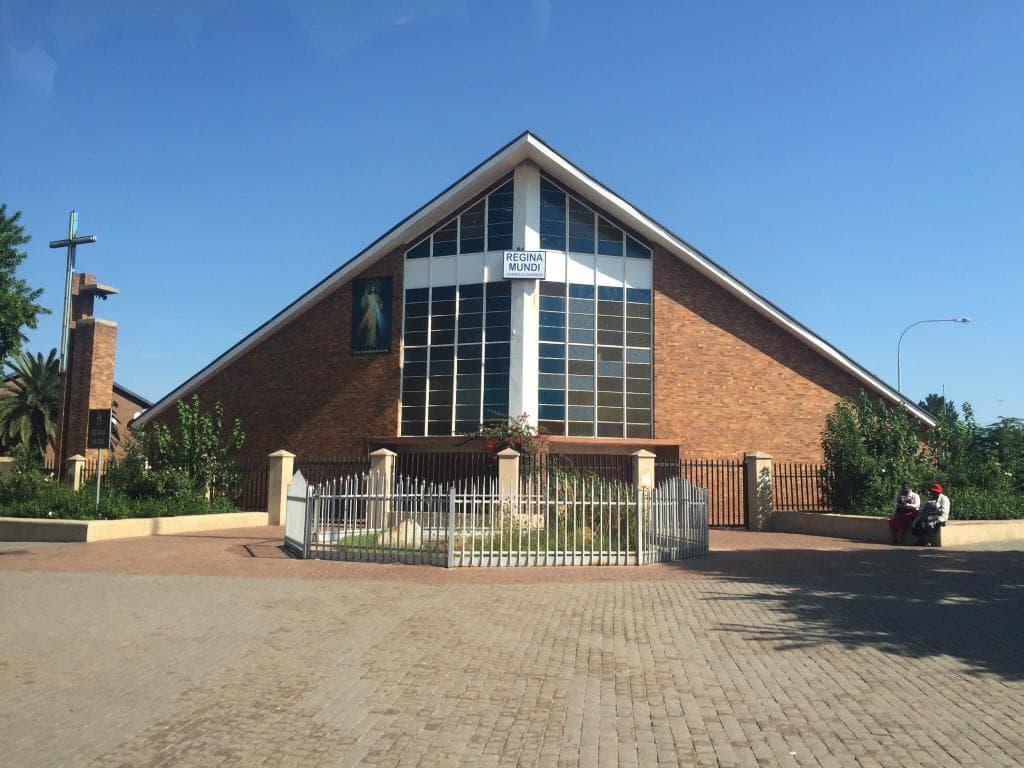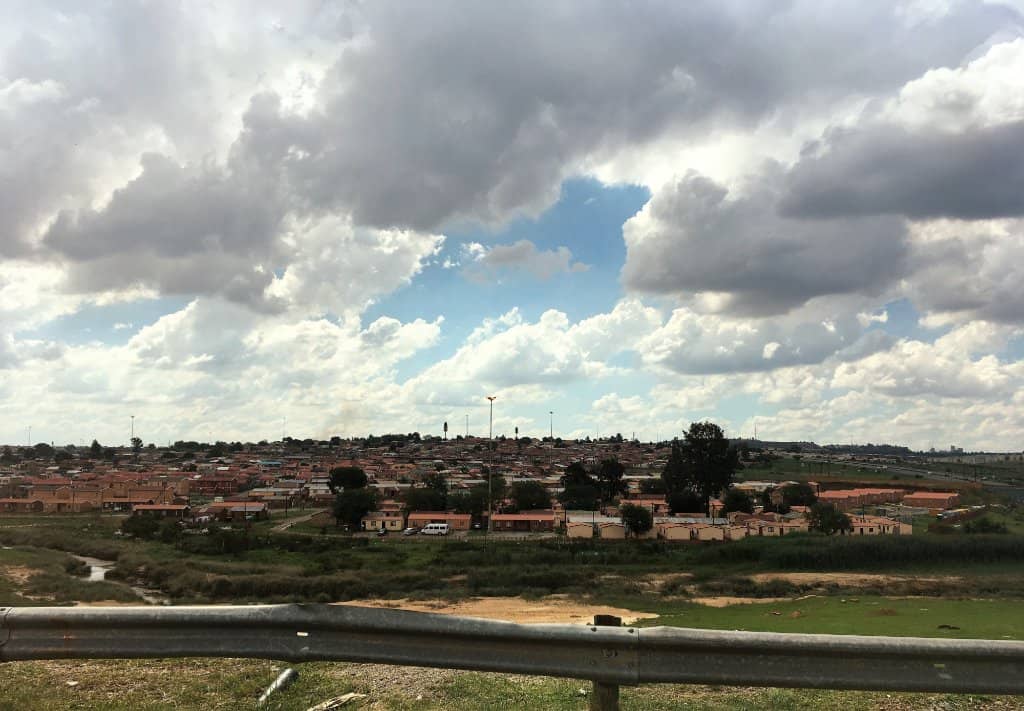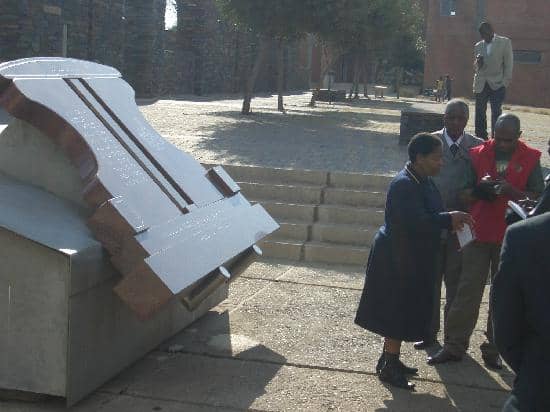
Hector Pieterson Museum Johannesburg
A poignant museum commemorating the 1976 Soweto Uprising, honoring Hector Pieterson and the fight for freedom.

Highlights
Must-see attractions

Social
From TikTok & Reddit
Best Time
Fewer crowds, more reflection

Hector Pieterson Museum Johannesburg
Best Time
Fewer crowds, more reflection

Highlights
Must-see attractions
A poignant museum commemorating the 1976 Soweto Uprising, honoring Hector Pieterson and the fight for freedom.
"An essential, emotional journey into South Africa's fight for freedom."

Allow ample time
Give yourself at least 2-3 hours to fully absorb the exhibits and their emotional weight.
Prepare for emotion
The museum is a powerful and often emotional experience. Be ready to confront difficult history.

Highlights
Discover the most iconic attractions and experiences

The 1976 Uprising Exhibits
Main exhibition halls
Immerse yourself in the events of June 16, 1976, through powerful displays and artifacts.

Hector Pieterson's Story
Dedicated section
Learn about the tragic life and legacy of Hector Pieterson, the 12-year-old boy who became a symbol.

Witness Accounts
Interactive displays
Hear firsthand accounts from survivors and witnesses of the Soweto Uprising, offering a deeply personal perspective.
Plans like a pro.
Thinks like you
Planning Your Visit
Understand the Significance
Book a Guided Tour
Best Times
Insider Tips
from TikTok, Instagram & Reddit
Allow ample time
Give yourself at least 2-3 hours to fully absorb the exhibits and their emotional weight.
Prepare for emotion
The museum is a powerful and often emotional experience. Be ready to confront difficult history.
Consider a Soweto tour
Combine your visit with a broader Soweto tour for deeper historical context.
Wear comfortable shoes
You'll be doing a lot of walking, especially if you combine this with other Soweto sites.
Tips
from all over the internet
Allow ample time
Give yourself at least 2-3 hours to fully absorb the exhibits and their emotional weight.
Prepare for emotion
The museum is a powerful and often emotional experience. Be ready to confront difficult history.
Consider a Soweto tour
Combine your visit with a broader Soweto tour for deeper historical context.
Wear comfortable shoes
You'll be doing a lot of walking, especially if you combine this with other Soweto sites.
What Travellers Say
Reviews Summary
Visitors consistently praise the Hector Pieterson Museum for its powerful and educational portrayal of the 1976 Soweto Uprising. Many highlight the emotional impact and the importance of remembering this pivotal moment in South African history. Some note that the subject matter is heavy, but essential for understanding the country's past.
"Didnt go inside the museum. But the information outside is wow.
Loved how everything there has a meaning. The trees, the walls, the line, the stones, the water, the paving etc. True artwork.
There is this guy who looks like he is not a tour guide but the information he has is too much. He knows everything by head. Wish i could remember his name to recommend him"
MUZIWETHU MOYO
"Heavy stuff, but a good addition to your historic experience if you are visiting the Mandela house, which is very close by. Also, a lot of the markets sit right outside of the memorial and give you a chance to experience a lot of the culture in a walkable safe area."
Stephanie Parrish-Chester
"We experienced terrific hours under the guidance of our experienced guide mr. Bheki of Soweto Guided Tours/Muano Tours, who shared a personal testimony about the struggle against apartheid and the years after. A moving story of suffering and overcoming, of not forgetting the pain, of healing reconciliation.
Mr. Bheki appeared to be a born storyteller and as a white, Dutch tourist I was drawn into the world from the 1970s and thereafter, while passing by the houses and churches of Nelson and Winnie Mandela and bishop Tutu. Also touching was the symbolism of the Hector Pierson Memorial and its square, plus the shoes on the wall nearby. What a tale to hear!
Cycling through the neighbourhood I was also touched by the friendliness of the people on the streets and felt very comfortable being there, contrary to what many may think.
This appeared to be the definitive highlight of my SA-trip - apologies to the big 5 :). This is even worth seven stars.
Also great was that the organisation arranged a taxi to pick us up and bring us back: driver Chris was nice company who brought us straight into the heart of Soweto."
Ronalđj K
What People Like
What People Dislike
Frequently Asked Questions
🚇 🗺️ Getting There
The most common way to reach the Hector Pieterson Museum is by taking a guided tour that includes Soweto. Many tours depart from Johannesburg and handle transportation. Alternatively, you can hire a taxi or use ride-sharing services, though this can be more expensive. Public transport options exist but can be complex for tourists.
Parking can be challenging in Soweto, especially during peak times. If you are on a guided tour, parking will be handled. If driving yourself, look for designated parking areas or be prepared to park a short walk away.
Yes, it's possible to visit the Hector Pieterson Museum as part of a day trip from Pretoria, though it will be a long day. It's often combined with other Johannesburg attractions. Many tour operators offer day trips that can be customized.
🎫 🎫 Tickets & Entry
The museum is typically open from Monday to Saturday, usually from 9:00 AM to 5:00 PM. It's always a good idea to check their official website or call ahead for the most current hours, especially on public holidays.
Admission fees are generally very affordable, often a few South African Rand. Many visitors find it to be excellent value for the profound experience it offers.
For individual visits, booking in advance is usually not necessary. However, if you are part of a large group or a guided tour, it's advisable to confirm arrangements with your tour operator.
Discounts may be available for students, seniors, or children. It's best to inquire directly with the museum or check their official information channels for any applicable concession rates.
🎫 🧭 Onsite Experience
Many visitors recommend taking your time to read the exhibits and reflect on the information presented. Engaging with the stories and photographs is key to understanding the significance of the Soweto Uprising.
The museum deals with sensitive and historical topics related to apartheid and violence. While educational, parents should consider their children's age and maturity level. It's a powerful learning experience but can be emotionally challenging.
Photography policies can vary. Generally, personal photography for non-commercial use is permitted in many areas, but it's always best to check for signage or ask museum staff before taking pictures, especially in sensitive exhibition spaces.
The Hector Pieterson Museum is located in Soweto, which is rich in history. Nearby attractions include Nelson Mandela's former home (Mandela House) and Vilakazi Street, the only street in the world to have housed two Nobel Peace Prize winners.
📸 📸 Photography
The iconic statue of Hector Pieterson and the surrounding memorial area are prime photo spots. Capturing the museum's exterior and the street art in Soweto can also yield great shots.
While personal photos are usually allowed, it's wise to be respectful of the solemn nature of the museum. Avoid intrusive photography and always check for specific rules regarding flash or tripod use.
For Different Travelers
Tailored advice for your travel style
👨👩👧 Families with Kids
If visiting with family, combining the museum with other, perhaps lighter, Soweto attractions like exploring local markets or enjoying traditional food can create a more balanced experience. Ensure you have comfortable walking shoes, as Soweto is best explored on foot or with a knowledgeable guide who can manage the pace for younger visitors.
📚 History Enthusiasts
To maximize your experience, consider booking a guided tour that specifically focuses on the historical significance of Soweto. This will allow you to connect the dots between the museum, Mandela House, and other key sites, gaining a comprehensive perspective. Reading up on the apartheid era beforehand can also enhance your appreciation of the exhibits.
Deep Dives
In-depth insights and expert knowledge
The 1976 Soweto Uprising: A Turning Point
The museum meticulously chronicles the events leading up to, during, and after the uprising. Through a combination of photographs, artifacts, and personal testimonies, visitors gain a deep understanding of the courage, resilience, and sacrifice of the Soweto youth. It's an essential stop for anyone seeking to comprehend the complexities of South Africa's history and the fight for liberation.
Many visitors find the experience deeply moving and educational. The museum serves not just as a historical record but as a space for reflection and remembrance, ensuring that the sacrifices made are never forgotten. It's a testament to the power of youth activism and the enduring quest for justice.
Experiencing Soweto: Beyond the Museum
Beyond the museum, consider visiting Mandela House, the former residence of Nelson Mandela, now a museum dedicated to his life and legacy. Vilakazi Street, where Mandela House is located, is famously the only street in the world to have been home to two Nobel Peace Prize winners (Nelson Mandela and Desmond Tutu). Exploring these sites offers a comprehensive view of the anti-apartheid movement and the individuals who led it.
Many travelers recommend taking a guided tour of Soweto to truly appreciate its history and culture. Local guides can share personal anecdotes and insights that bring the township's past and present to life, offering a more authentic and enriching experience than exploring independently.






Social
from TikTok, Instagram & Reddit